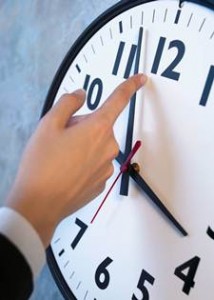“There are three kinds of lies: lies, damned lies, and statistics.” — Mark Twain, American author, who attributed it to British Prime Minister Benjamin Disraeli.
“I’m a greater believer in luck, and I find the harder I work, the more I have of it.” — Coleman Cox, American inspirational author.
 For the past several years, I’ve reviewed and written about the annual American Time Use Study conducted by the U.S. Bureau of Labor Statistics (BLS). While the data can be a bit confusing, it offers an intriguing snapshot of how we use our time. This past June 20, the BLS released its 2012 edition, covering everything from hours spent working and sleeping, to how long we watch TV and play video games.
For the past several years, I’ve reviewed and written about the annual American Time Use Study conducted by the U.S. Bureau of Labor Statistics (BLS). While the data can be a bit confusing, it offers an intriguing snapshot of how we use our time. This past June 20, the BLS released its 2012 edition, covering everything from hours spent working and sleeping, to how long we watch TV and play video games.
One thing to keep in mind as you read this post (and especially as you data-mine the study itself) is that for the purposes of ATUS, the BLS defines everyone 15 years or older as an adult, whether they work or not—including students, the retired, the disabled, and the unemployed. They also define an “average day” to include weekends. So don’t let the initial figures in the “Working and Work-Related Activities” entries on the stats tables, especially Table 1, throw you off. Last year, a few news sources expressed dismay at the fact that the average American adult works just 4.04 hours on an average weekday. They failed to realize that this figure took into account everyone, even those who didn’t do a lick of paid work.
The real meat lies deeper in the stats, which reveal that the average workday for those who do work was 8.05 hours long (including activities like commuting and preparing for work)—up a tick from 2011’s 8.00 hours. That may not sound like a big deal, until you realize that it represents an average over an entire week and includes part-time workers.
On average, men worked longer than women, at 8.54 hours, up from last year’s 8.4 hours (a difference of about nine minutes per day). Women, who are more likely to work part-time since they handle more of the housework and childrearing duties, averaged 7.49 hours, essentially the same as last year’s 7.5 hours.
Basically, we’re once again working harder than ever. But that may not be bad news, though it may seem so at first glance.
We Americans continue to test the boundaries on how far we can stretch our productivity. But as James Sinegal, co-founder of Costco, has pointed out, “[If] you don’t have a very motivated working class, it starts to affect the dynamics of the economy. If workers are disenchanted and disenfranchised, productivity losses will go along with that.”
Sinegal began his career in the grocery industry as a bagger in 1954, and he literally worked his way up to the top—so if anyone knows and understands worker motivation, it’s Sinegal. Clearly, American workers remain motivated, or we wouldn’t be working so much…and we know from other studies that we really do produce like mad. Fortunately, the increase in the workweek isn’t coming at the expense of leisure time or sleep—we’re getting slightly more of each this year than last.
Our workers are willing to put in the effort; we just need a better economic framework in order to really shine. In fact, I suspect that this willingness to work hard is what has kept the American economy from going completely down the toilet in the past few years, and the strong work ethic will reward us big-time when the global economic situation finally improves.
Once we can match that motivation to a healthier economy, there’s no telling where productivity will be able to go.


